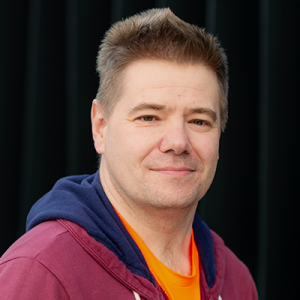
Matthew Holt
Research focus
Astrocytes are the most abundant cell type in the mammalian central nervous system. In fact over 60% of the human brain is composed of astrocytes! Unfortunately, while we know that astrocytes are intimately associated with neuronal cell bodies and synapses their function(s) remain largely unknown. Are they acting merely as support cells, providing a supporting matrix for synapse formation, and providing substrates and energy for neurotransmission? Or are they directly influencing synaptic transmission by releasing and/or removing neuroactive substances from the synaptic cleft? A major obstacle to our understanding is that the basic signaling pathways used by astrocytes are only poorly understood.
The long-term goal of our group is to understand the molecular mechanisms that control development and function of astrocytes in vivo, and how they interact with neurons.
Our strategy is to use astrocytes isolated from mouse brain as a starting point. This allows us to effectively take a “bottom up” approach to astrocyte function. In a first step, we are combining state-of-the-art biochemical and physiological techniques (including quantitative mass-spectrometry and super-resolution fluorescence microscopy) to identify important protein and lipid signaling pathways in astrocytes, including their spatial and functional relationship to each other. In a second step, we will employ novel transgenic technologies to manipulate these pathways in vivo – with 2-photon based imaging techniques, and electrophysiological recordings in acute brain slices, allowing the study of astrocyte function in real-time.
As one astrocyte can actually contact 1000s of synapses from 100s of neurons, we believe that our in vivo approach will ultimately provide important insights into the function of neuronal circuits, which will impact on studies of learning and memory and behavior.
Interestingly, neurological conditions as diverse as Alzheimer’s disease, HIV and stroke are all characterized by massive synapse loss and failure of neuronal circuits. Many of the treatment strategies currently in development continue to specifically “target” neurons. This is surprising when understanding how astrocytes influence neuronal function represents a genuine alternative strategy. Astrocytes already know to keep neurons alive and working! As we determine the molecular mechanisms that underlie astrocyte function, we believe we will gain greater insights into the etiology of many neurological disorders, opening up exciting new therapeutic strategies.